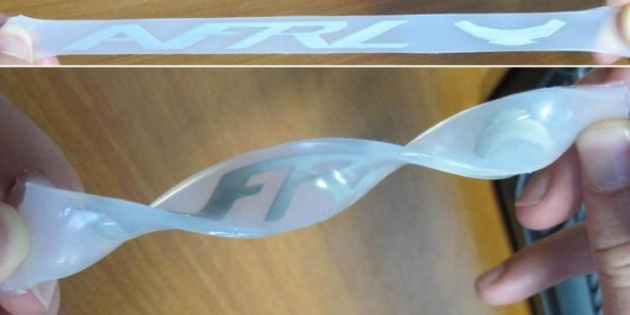
Researchers at the Air Force Research Laboratory at Wright-Patterson Air Force Base are working on a new form of electronics encased in a stretchy, bendable casing that allows you to wrap leads around body parts and even sense strain and stress in buildings, airplanes, and other vehicles. The produce of the Department of Defense’s Flexible Hybrid Electronics Manufacturing Innovation Institute, the material can be used in any situation where flexibility and high pressure are the norm.
“Basically, we are using a hybrid technology that mixes traditional electronics with flexible, high-performance electronics and new 3-D printing technologies,” said Benjamin J. Leever, Ph.D. “In some cases, we incorporate ‘inks,’ which are based on metals, polymers and organic materials, to tie the system together electronically. With our technology, we can take a razor-thin silicon integrated circuit, a few hundred nanometers thick, and place it on a flexible, bendable or even foldable, plastic-like substrate material.”
The team is using liquid gallium alloys injected into the substrate to carry electricity. Because the alloys are never exposed to air you efficiently prevent oxidation. The material can then be “integrated into complex curved surfaces, such as an airplane’s wing, or even a person’s skin.” The team also sees some value in the material for weapons. For example, a slice of this material connected to a bomb could survive the initial impact with a target to control the final payload detonation. In short, it acts as a tough skin and sensor for highly sensitive situations.



